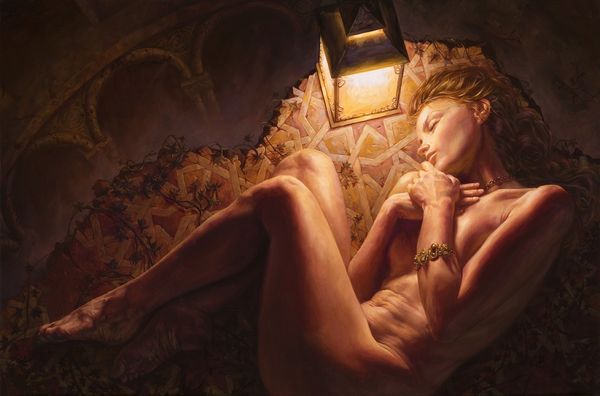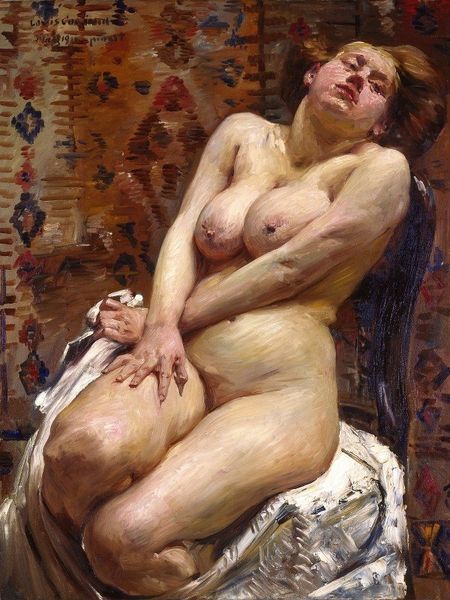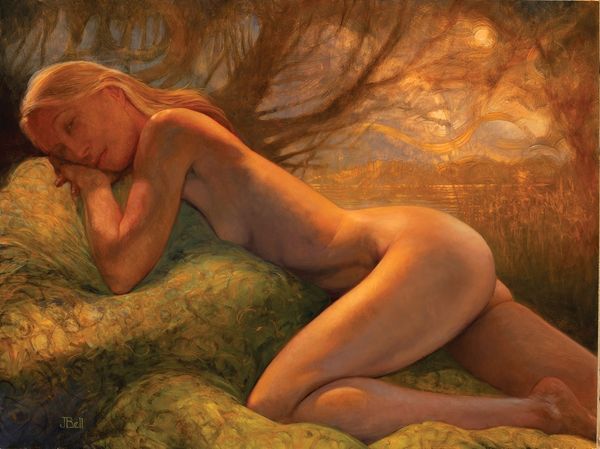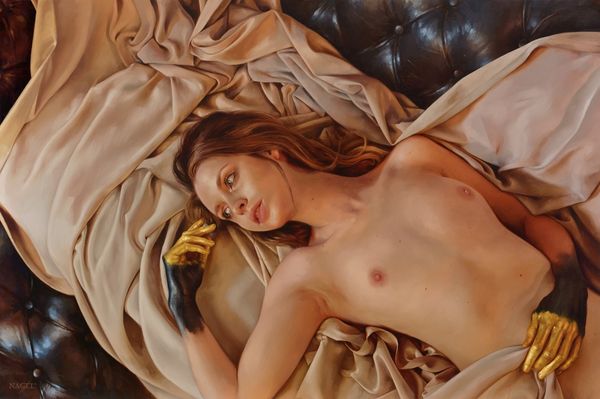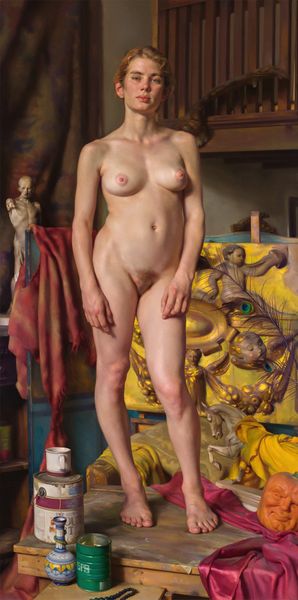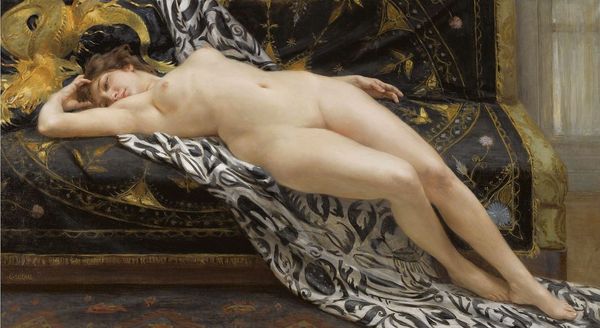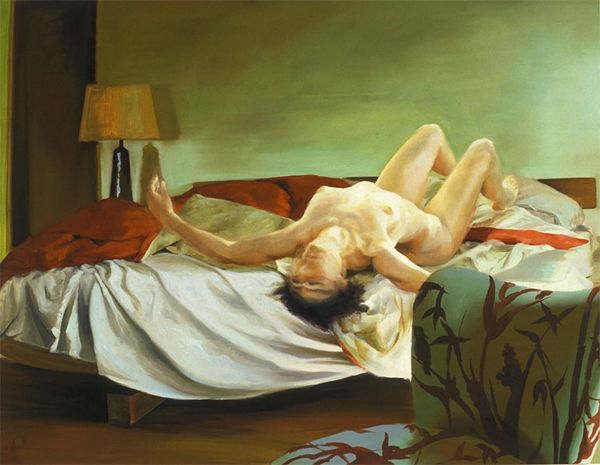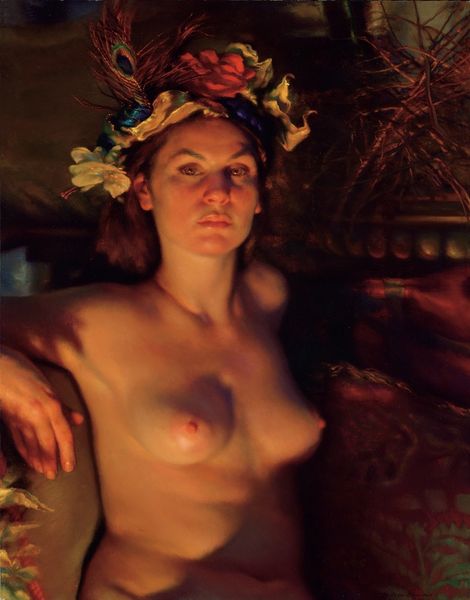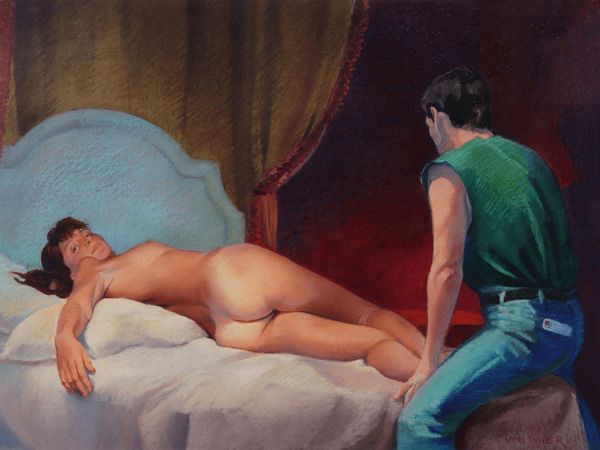
Copyright: D. Jeffrey Mims,Fair Use
Editor: We are looking at D. Jeffrey Mims’s “India,” an oil painting from 1997. The woman seems lost in thought. How do you interpret this work in terms of its historical and cultural context? Curator: What strikes me is the tension between its clear references to academic painting of the 19th century – think Ingres or Bouguereau – and the late 20th-century context in which it was created. How does Mims negotiate this history? Editor: He's reviving it? Curator: Yes, and it is precisely this revival or even pastiche that interests me. Traditional skills are being demonstrated, but to what end? Is it merely a nostalgic exercise, or does the artist aim to comment on the tradition itself by re-presenting it in a contemporary environment? Consider the gaze of the sitter and the power dynamics at play here; are they a conscious comment on art history, or an uncritical rehashing? How does this compare to contemporary depictions of the female body? Editor: That makes me think about the title. Why "India" for a painting of a nude woman who appears… European? Curator: The title itself points to the history of orientalism in art. What might this choice suggest about Western representation and artistic appropriation? By calling her “India,” does Mims invite us to consider historical power dynamics, or is it just an aesthetic gesture, invoking the exotic? Editor: This really reframes how I initially saw it. I’ll have to spend more time thinking about that connection. Curator: Absolutely. Understanding art within its socio-political moment reveals deeper meanings and raises essential questions about art's role in society.
Comments
No comments
Be the first to comment and join the conversation on the ultimate creative platform.
